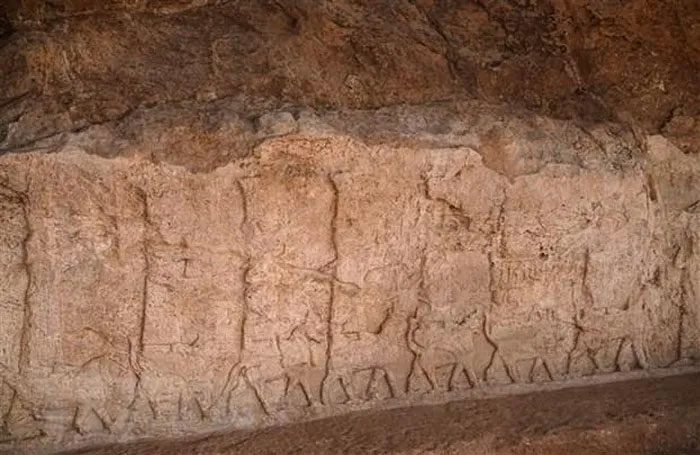Thirteen stunning stone reliefs have been expertly integrated into the walls of an approximately 10-kilometer-long irrigation canal in Faida, northern Iraq.
On October 16, officials from northern Iraq announced an “archaeological park” featuring artistic stone reliefs dating back to the time of the Assyrian kings, around 2,700 years ago, depicting kings praying before deities.

The stone relief integrated into the wall of an irrigation canal in Faida, northern Iraq, on October 16, 2022. (Photo: AFP/TTXVN)
These thirteen beautiful stone reliefs have been skillfully incorporated into the walls of a 10-kilometer-long irrigation canal in Faida, northern Iraq.
The reliefs measure 5 meters wide and 2 meters high, dating back to the reign of King Sargon II (721-705 BC) and his son Sennacherib.
Mr. Bekas Brefkany, an official from the archaeological agency in Dohuk, located in the Kurdish autonomous region of northern Iraq (Kurdistan), stated that it is likely that more artifacts will be discovered in the future.
According to him, Faida is one of five parks that the regional government hopes will become part of a large-scale project aimed at transforming the area into an “attraction for tourists and a source of budget revenue.”
The reliefs were discovered during excavations conducted by archaeologists in the Kurdish region and the University of Udine in Italy in recent years.
Professor Daniele Morandi Bonacossi, an expert in Near Eastern archaeology from the aforementioned university, noted that while there are many other relief structures in Iraq, none are as “grand and magnificent” as these.
Iraq is home to some of the oldest cities in the world.
It was once inhabited by the Assyrians, Sumerians, and Babylonians and is where the earliest evidence of human writing has been found.





















































